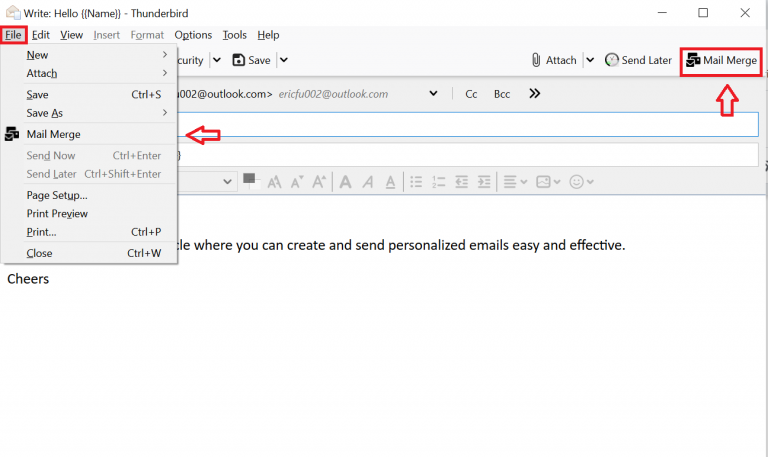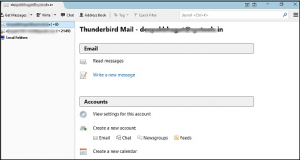
Import the Thunderbird address book-choose: File – Wizards – Address Data Source.Set up the SMTP server-in Writer, choose: Tools – Options.OpenOffice Writer can read a Thunderbird address book (or some other source of addresses), merge the data with an OpenOffice document to create personalized messages, and send the messages directly to your SMTP server. Sometimes its useful to use that with a customized template that you created with the QuickText add-on. You can send the messages by choosing File – Send Unsent Messages in the normal way.From there, you can edit some of them if needed. The messages are placed in Thunderbird's Outbox.The add-on generates personalized messages.You provide your data set through Thunderbird's address book or with a CSV file.Mail Tweak (obsolete) through its Personalize messages tweak.The add-on page explains how to use it and reference customized fields. There are many applications for this process, such inviting friends to a party, requesting feedback, or increasing the response rate on your survey. If all is well, use your real spreadsheet to send your message to your real contacts! Conclusion Read this carefully and click “Send” if you are happy.Ĭheck mailinator to ensure that all your messages were received correctly, ensuring that your Google forms links work as expected. You will be warned about checking your emails before sending them. This can be helpful if, for example, your email provided has a rate limiting policy.Ĭlick “OK” on the “Mail Merge” box to send your emails. For example, in the “To” field, you should enter to the Pause field in the Thunderbird Mail Merge box to tell Thunderbird to pause for the requisite time.


ThunderbirdĮnter your recipient field names in the appropriate places, surrounded by double braces. Paste the link into your favourite text editor, such as Notepad or Gedit, just to hold it for a moment. Open it.Ĭomplete the fields that you already have recipient data for using the heading names from your recipient spreadsheet. Notice the three vertical dots menu in the top right. If you don’t have this option, or just want to send to colleagues, ignore this step. If you have it, untick the “Restrict to users in and its trusted organisations” so that you can send it to anyone. Save your spreadsheet as something easy to remember in either XLS or ODF format. As an example, we will use my test spreadsheet that makes up random dummy data, as it is best to ensure you are comfortable with the process before sending rubbish to all your contacts by mistake!Įnsure that all attributes have easy names in the first row – “name”, “email” etc.


 0 kommentar(er)
0 kommentar(er)
